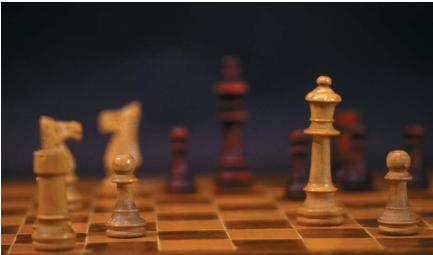Perception

Perception is the quality of being aware of the conditions in one's environment. For example, visual perception refers to the ability of an organism to see objects in the world around it. Other forms of perception involve the senses of touch, smell, taste, and sound.
Perception is not a passive activity. That is, one way to think of visual perception is to say that light rays bounce off an object an enter one's eyes. Those light rays then create a "sight" message that travels to the person's brain where the object is recorded. But that explanation is incomplete. The brain also acts on the message received from the eyes in ways that are not totally understood by scientists. The important point is that the real world is not necessarily the world that one perceives.
A classic experiment illustrates this point. A group of young boys are all asked to look carefully at a nickel. The nickel is then taken away, and the boys are asked to draw a picture of the nickel. Boys in this experiment who come from wealthy families tend to draw the nickel smaller in size than boys from poor families. Each boy's perception of the nickel is affected to some extent by how important a nickel is in his life.
The biology of perception
All systems of perception have a common structure. They consist of cells designed specifically to detect some aspect of the surrounding environment, a series of neurons (nerve cells) that transmit the perceived information to the brain, and a specific segment of the brain for receiving and analyzing that information.

Receptor cells can be classified according to the kind of stimuli to which they respond. Chemoreceptors, for example, are cells that detect certain kinds of chemical substances. Receptor cells in the nose and mouth are examples of chemoreceptors. Photoreceptors are another kind of receptor cell. Photoreceptors detect the presence of light. Mechanoreceptors detect changes in mechanical energy, changes that occur during touch and hearing and in maintaining the body's equilibrium (balance).
Messages received by any kind of receptor cell are passed through a network of neurons into the spine and on to the brain. There, messages are received and analyzed. Visual messages are analyzed in the visual cortex, for example, and messages from the ears in the auditory cortex.
Puzzling questions
Even with our fairly complete understanding of the biology of perception, some intriguing questions remain. Those questions cannot, as yet, be answered strictly in terms of the physical make-up of an organism's body. One of these questions has to deal with constancy. The term constancy refers to the fact that our perception of objects tends to remain the same despite real changes that occur in their image on the retina of the eye.
For example, suppose that you walk down a street looking at the tallest building on the street. As you approach the building, its image on the retina of your eye gets larger and larger. Certain proportions of the building change also. Yet, your brain does not interpret these changes as real changes in the building itself. It continues to "see" the building as the same size and shape no matter how close or how far you are from it.
Another perception puzzle involves the perception of motion. The mystery lies in how perceived movement cannot be accounted for by the movement of an object's image across the retina. If that were so, movement of the observer, or even eye movement, would lead to perceived object movement. For example, when riding a bike, the rest of the world would be perceived as moving.
Depth perception. One of the puzzles that has interested scientists for centuries is depth perception. Depth perception refers to the fact that our eyes see the world in three dimensions, the way it is actually laid out. The problem is that images that enter the eye strike the retina, an essentially flat surface, at the back of the eye. How can a flat image on the retina be "read" by the brain as a three-dimensional image?
An important element in the answer to this puzzle appears to be binocular vision. The term binocular vision refers to the fact that humans and most other organisms detect visual signals with two eyes. The two eyes, set slightly apart from each other, receive two slightly different images of the environment. By methods that are still not entirely understood, the brain is able to combine those two images to produce a binocular version of an image, a three-dimensional view of the environment.